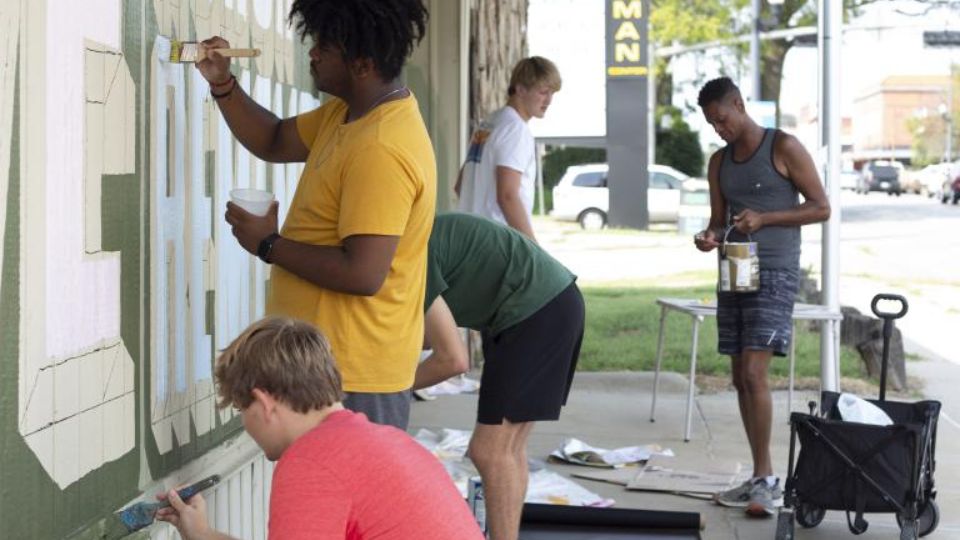
Open registration for Fall 2023 semester courses is April 12 through August 20 in MyRed. As you review your degree requirements and start planning your fall schedule, consider these five interesting classes that all count toward ACE requirements.
ARTP 160 | Street Art: Visual Voice in the Urban Environment
In this ACE 2 class, students examine the unique role that street art plays in a community. According to associate professor Sandra Williams, this is one of the only courses offered in street art nationally. The class provides an in-depth look at street art as a revolutionary medium that explores the intersections between race, citizenship and discourse of exclusion. The course also engages students by having them try their hand at their own street art.
“The study of these forms of expression considers looking at art as an act of social change that can often be traced back to the single action of one person or one small idea,” said Williams. “Artists who seek to engage with the community radically often do so by pushing boundaries and exposing societal taboos.”
____________________________________________
ENGL 216 | Children’s Literature
Children’s Literature explores the historical and cultural developments of both writing for youth and ideas about childhood itself. The class is an interesting way to revisit childhood tales while learning new facts related to the author and the time period of the work. Read silly nonsense poetry, scary stories, fairy tales, as well as literature of a surprisingly serious nature. Learn to see classic tales such as “Little Red Riding Hood” and “Puss-in-Boots” in a different light in this ACE 5 class.
“Every semester, I am struck anew by the quality of the published works we read in this class,“ said assistant professor of Practice Pascha Sotolongo Stevenson. “They are great art that also details the historical struggles and joys of children decades or even centuries before our own.”
____________________________________________
TMFD 123 | Clothing and Society
Assistant professor of practice Kylin Flothe leads students in examining how dress and appearance impact and reflect other aspects of life such as self-esteem, ethnicity, sexuality, media and more. The ACE 9 course encourages students to consider things about clothing that they have never thought of before.
“Dress is a powerful communicator that impacts us all, and it is always evolving as technology, politics, economics, and art evolve,” said Flothe. “I love not only researching and teaching this topic, but also exploring and discovering new things each time I teach the course.”
____________________________________________
METR 140 | Severe and Unusual Weather
In this ACE 4 course, students learn to explain the science behind - and even predict - some of Earth’s most interesting atmospheric phenomena. Weather is constantly changing and challenging our planet. Learning the causes behind unique weather conditions like blizzards, flash floods, hurricanes, tornadoes, and heat waves will interest students and even prepare them to experience this weather themselves.
“I enjoy teaching this course because it empowers students with essential knowledge about extreme weather conditions that will keep them and others around them safe,” said assistant professor of Practice Dawn Kopacz.
____________________________________________
COMM 360 | Dialogue Across Difference
This course analyzes the complications faced when attempting to communicate polarizing topics. Whether due to anxiety toward talking about contentious topics or concern that one’s voice will not be heard or respected, people commonly avoid uncomfortable discussions. For this ACE 2 course, students work in small groups to identify areas of strength and areas for improvement or refinement as it relates to their communication skills and comfort in conversations about salient issues.
“I strongly believe that one of the best ways to enact change, increase understanding, and improve social and personal relationships is by communicating across differences,” says professor Jordan Soliz. “In the end, my goal is to provide students with knowledge, insight, and practice in communicating across difference that will benefit them in their professional, personal, and civic lives.”
____________________________________________